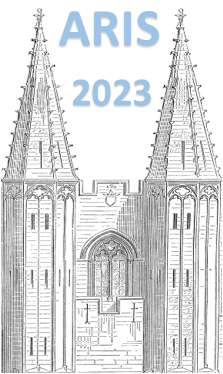Orateur
Description
The neutron lifetime discrepancy between beam and bottle experiments of 4$\sigma$ could be interpreted as a possible sign of the neutron into dark particles [1]. If such a decay exists, it could also occur in unstable nuclei with sufficiently low neutron binding energy, a quasi-free neutron decay into a dark matter particle $\chi$; as is the case of $^6$He with S$_{2n} = 975.45keV < m_n - m_{\chi}$ [2]. This quasi-free neutron dark decay would be as followed $^6He \rightarrow ^4He + n + \chi$ which is the only way to have the emission of a free neutron in the decay of $^6$He. The SPIRAL1 facility at GANIL was used in June 2021 in order to produce a pure $^6$He$^{1+}$ radioactive beam at 25keV to observe an excess of neutrons in the decay of $^6$He which would be a unique signature for dark matter creation. In this presentation, we report the (preliminary) results of this experiment to set an upper limit for this dark decay mode in $^6$He.
[1] Bartosz Fornal and Benjam ́ın Grinstein. “Dark Matter Interpretation of the Neutron Decay Anomaly”.
In: Phys. Rev. Lett. 120 (19 May 2018), p. 191801. doi: 10.1103/PhysRevLett.120.191801. url:
https://link.aps.org/doi/10.1103/PhysRevLett.120.191801.
[2] M. Pf ̈utzner and K. Riisager. “Examining the possibility to observe neutron dark decay in nuclei”.
In: Phys. Rev. C 97 (4 Apr. 2018), p. 042501. doi: 10 . 1103 / PhysRevC . 97 . 042501. url: https://link.aps.org/doi/10.1103/PhysRevC.97.042501

